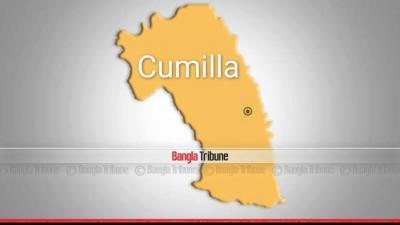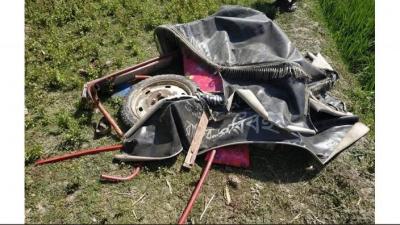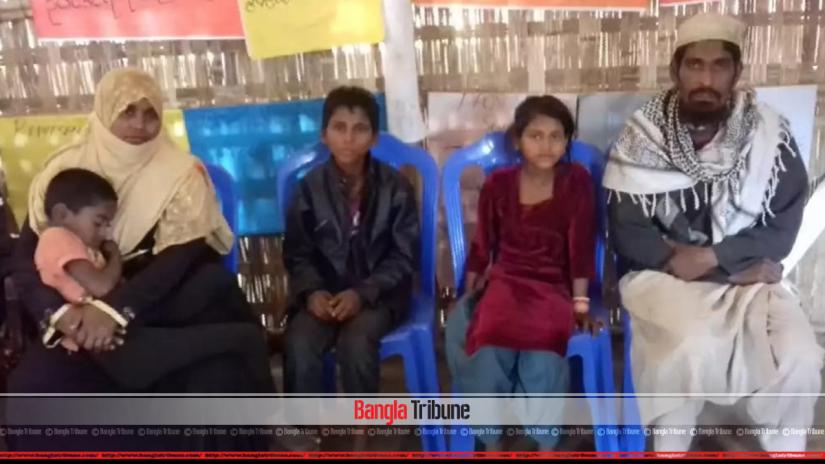 As many as 468 members of 111 Rohingya families have arrived in Cox’s Bazar from India over the past 10 days, say sources of the Refugee, Relief and Rehabilitation (RRR) Commissioner.
As many as 468 members of 111 Rohingya families have arrived in Cox’s Bazar from India over the past 10 days, say sources of the Refugee, Relief and Rehabilitation (RRR) Commissioner.
Most of them are now staying at the Rubber Garden refugee camp at the district’s Ukhiya Upazila under the supervision of the United Nations (UN), the sources added.
“We are aware of the situations, but yet to come up with the details,” RRR Commissioner Mohammad Abul Kalam told Bangla Tribune.
Fears of repatriations sparked among the Rohingya Muslims, sheltering in India’s refugee camps since the country moved to deport them to Myanmar. India estimates that 40,000 Rohingyas live in camps across the country, including the capital, New Delhi, having arrived over the years after fleeing violence and persecution in Myanmar, which denies them citizenship.
India estimates that 40,000 Rohingyas live in camps across the country, including the capital, New Delhi, having arrived over the years after fleeing violence and persecution in Myanmar, which denies them citizenship.
On Oct 5, 2018, India deported the first batch of seven Rohingya men to Myanmar, followed by sending the second batch of a five-member family on Jan 3 this year.
Accounts of Rohingyas’ fleeing India refugee camps were found true during on-spot visits to Cox’s Bazar.
“As many as 74 Rohingays, who fled India’s refugee camps over the past week, have taken shelter at the transit points,” Mohammad Rezaul Karim, in-charge of Kutupalong refugee camp, told Bangla Tribune.
“Another batch of 18 refugees arrived on Thursday (Jan 10) evening,” Karim added before categorically admitting a large number of Rohingya’s arrival in Cox’s Bazar from India.
Recently, 12 of three Rohingays families, including seven children and three women, took shelter at Tambru No-man's land in Bangladesh-Myanmar border at Banderban’s Naikhyangchori after fleeing the Keraintela area in the Indian state of Jammu & Kashmir.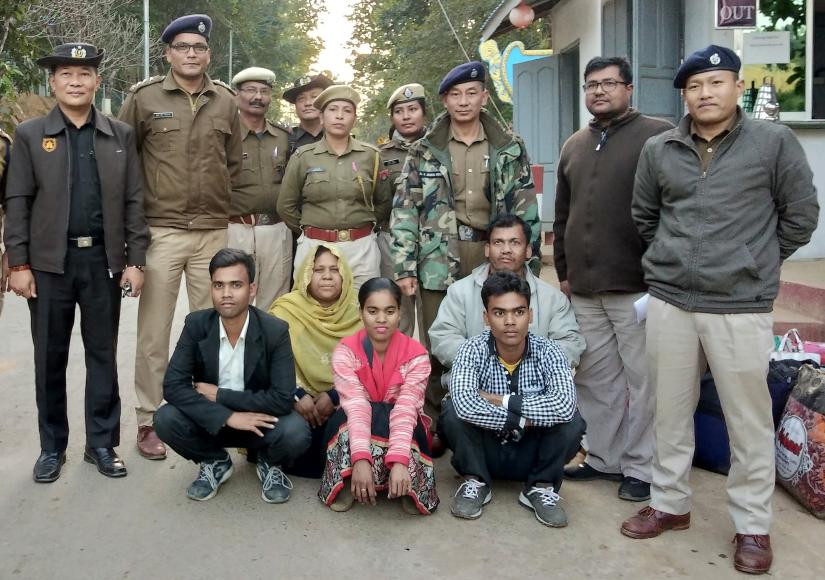 According to the account of a man, who fled India, Keraintala housed over 3,000 Rohingya people.
According to the account of a man, who fled India, Keraintala housed over 3,000 Rohingya people.
“Six people of a Rohingya family arrived in my camp three days ago,” said Tambru refugee camps chairman Dil Mohammad before adding “Authorities concerned have been informed but they (Rohingyas) are now staying at the no man’s land.”
Quoting the newly arrived refugees, Mohammad said, these Rohingyas hold identity cards, provided by the Indian government and the United Nations High Commissioner for Refugees.
Abdul Aziz, who fled India with four days ago, now took shelter with his maternal uncle Ayub’s family in Shamolpur refugee camp in Cox’s Bazar’s Teknaf.
Aziz, son of Azim Ullah from Myanmar’s Maungdaw, left his wife and three children in India. “When I was a child I fled Myanmar with my family and took shelter in Shamlypur. After staying for 12 years here, my family fled to India’s Keraintala,” Aziz told Bangla Tribune.
“When I was a child I fled Myanmar with my family and took shelter in Shamlypur. After staying for 12 years here, my family fled to India’s Keraintala,” Aziz told Bangla Tribune.
“I worked at a welding workshop to manage the family expenses. But, sometimes I didn’t get my wages,” Aziz explained how hard he had to live in India.
Elaborating his route from Kashmir to Cox’s Bazar, Aziz said, “It took three days to arrive in Kolkata from Keraintela.”
He entered Bangladesh through Satkhira border with the help the agent, and then took a Chhatogram-bound bus to arrive in Teknaf via Cox’s Bazar.
The man, however, admitted that fear of deportation caught him following the repatriation move over Rohingya between India and Myanmar.
Shamlypur camp chairman Abul Kashem said he is aware of that a Rohingya youth from India arrived here four days ago.
“He (the youth) has a UNHCR card, which he received from India,” said Kashem. 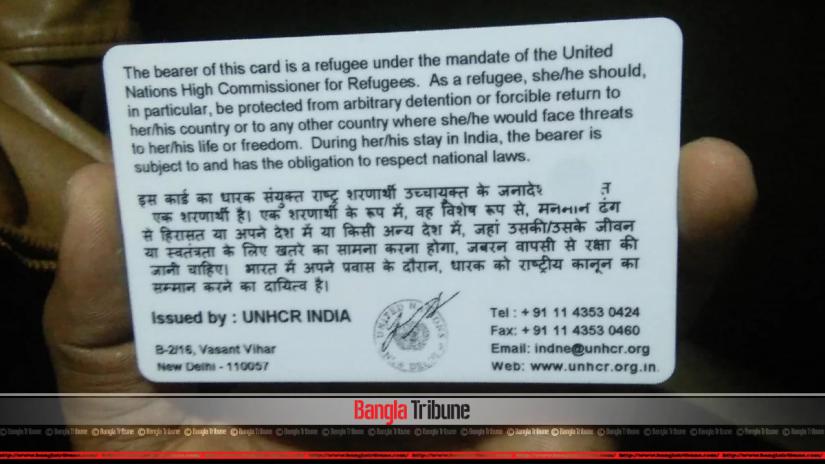 Meanwhile, law enforcement agencies stay alert on the Rohingyas’ entry into Bangladesh from India.
Meanwhile, law enforcement agencies stay alert on the Rohingyas’ entry into Bangladesh from India.
Shamlyapur refugee camp in-charge Badur Rahman said, “A Rohingya youth has taken shelter in the camp after he fled India’s Kashmir.
“Law enforcement agencies are working on the matter,” Rahman said, who is a representative of the RRR Commissioner.
Nearly 50 Rohingya who fled India, have been detained this month, Ukhiya Police OC Abul Kahyer told Bangla Tribune.
According to this police official, most of them were women and children.
These Rohingyas were first sheltered in Ghumdhum transit point in Bandarban’s Naikhongchhari and later sent to the different refugee camps in Ukhiya, said Khayer.
 Country
Country
41262 hour(s) 8 minute(s) ago ;
Morning 01:02 ; Wednesday ; Jul 02, 2025
Over 450 Rohingyas arrive in Cox’s Bazar from India in 10 days
Send
Abdur Rahman, Cox’s Bazar
Published : 21:46, Jan 11, 2019 | Updated : 22:15, Jan 11, 2019
Published : 21:46, Jan 11, 2019 | Updated : 22:15, Jan 11, 2019
0 ...0 ...
/hb/
Topics: Top Stories
- KOICA donates medical supplies to BSMMU
- 5 more flights to take back British nationals to London
- Covid19: Rajarbagh, Mohammadpur worst affected
- Momen joins UN solidarity song over COVID-19 combat
- Covid-19: OIC to hold special meeting
- WFP begins food distribution in Cox’s Bazar
- WFP begins food distribution in Cox’s Bazar
- 290 return home to Australia
- Third charter flight for US citizens to return home
- Dhaka proposes to postpone D8 Summit
Unauthorized use of news, image, information, etc published by Bangla Tribune is punishable by copyright law. Appropriate legal steps will be taken by the management against any person or body that infringes those laws.
Bangla Tribune is one of the most revered online newspapers in Bangladesh, due to its reputation of neutral coverage and incisive analysis.
F R Tower, 8/C Panthapath, Shukrabad, Dhaka-1207 | Phone: 58151324; 58151326, Fax: 58151329 | Mob: 01730794527, 01730794528

